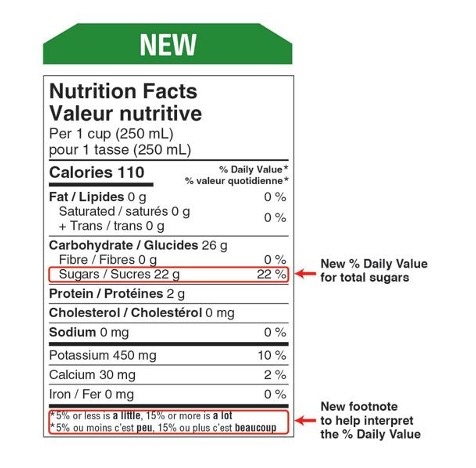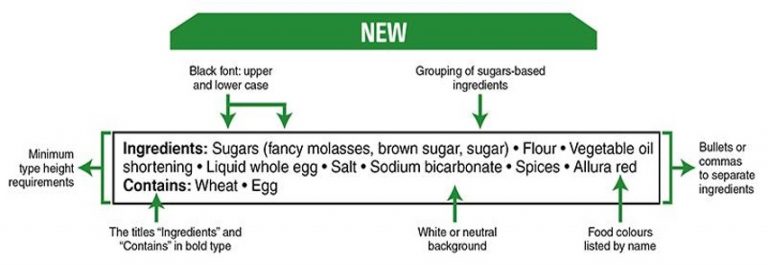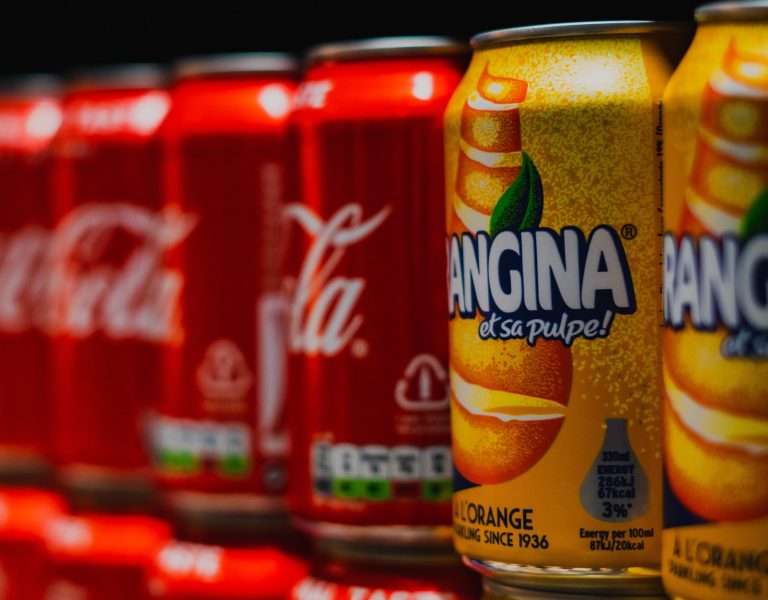Today, the average Canadian adult consumes 110 grams of sugar per day, equivalent to approximately 26 tablespoons. As much as 35% of this daily intake comes from foods containing large amounts of added sugar such as, soft drinks, breakfast cereals, and packaged cookies, cakes, and desserts.
For many people, determining the amount of sugar in a packaged product can be downright confusing thanks to clever food marketing and strategies employed by food companies to hide sugar in plain sight. Thankfully, nutrition labels in Canada have been updated to make it easier for the consumer to determine what is found in packaged foods.
In this article we review some of those changes, as well as the clever ways food companies try to hide sugars in your favourite foods. By shining a spotlight on sources of sugar in our diets, we can shop smarter and make healthy, informed decisions about the foods we purchase at the grocery store.
Understanding Sugar on the Label
The first thing to look out for on a nutrition label is the percent daily value (or % Daily Value). This is based on a daily sugar intake of 100 grams. Ideally, most sugars in a healthy eating plan should come from fruits, vegetables, whole grains, and dairy products. A good estimate to follow is 5% daily value or less of a nutrient is considered a small amount, while 15% daily value or more is considered a high amount. Using this rule, we can see that 1 cup of our food product contains a high amount of sugar, encouraging us to be mindful of how much we consume.
It is also important to look at the ingredients’ list of your favourite foods so that you can see the exact sources in the product. All sources of sugar are grouped on an ingredients’ list. In our list below we can see that this product contains various sweet sources including fancy molasses, brown and regular sugar. These are listed in order of descending weight, so we know that more of the sugars in this product come from molasses.
Sugar comes in many different forms, and from many different sources, so listing them this way makes it easier for the consumer to visualize what goes into packaged foods. Other sugar sources you might see on an ingredient list include:
- White, brown or beet sugar
- High fructose corn syrup
- Glucose, fructose, maltose, sucrose, dextrose
- Honey, molasses, maple syrup, agave syrup, barley malt extract
- Fruit juice concentrate, fruit puree concentrate
Sugar - The Worst Offenders
Knowing how to identify foods that are highest in sugar can help you make an informed decision about the products you purchase at the grocery store. Today, the largest amount in the average Canadian diet comes from sugary drinks such as:
- Soft drinks
- Energy drinks
- Sport drinks
- Fruit juices (100% and sugar-added varieties)
- Flavoured water with added sugars
It is often added to these drinks to help improve their flavour and to make them more appealing to consumers. Limiting these types of beverages or replacing them with water can be a great way to maintain a healthy diet.
Another major source of sugar in the Canadian diet comes from processed, packaged, or preserved foods that use it to improve taste, texture, shelf-life, and appearance to make them more appealing to consumers. Some of these foods include:
- Sugary breakfast cereals
- Packaged cookies, cakes, and desserts
- Candy and chocolate
- Jellies, jams, and preserves
Just like with sugary drinks, consuming these foods in moderation, or replacing them with fresh fruits or vegetables can benefit any healthy eating plan.
Too Much of a Good Thing
Although sugar helps to make foods more appealing, consuming more than the recommended daily amount can have many negative health effects. Diabetes Canada recommends that added sugars should make up less than 10% of total daily calorie intake. Foods and drinks that are high in sugar are also high in calories, and excess calorie consumption can contribute to weight gain and cardiovascular disease. These high-sugar foods are also lacking in essential vitamins, minerals, and nutrients, and provide minimal benefit to our health. Consuming more than the recommended daily amount can also lead to tooth decay and gum disease which is painful for you and your wallet!
Below are some tips to help you stay within the recommended daily amount:
- For breakfast, try substituting sugary breakfast cereals with a bowl of fruit and yogurt, or whole grain oats
- Fruit is a great choice for dessert boosting fibre and nutrient intake simultaneously
- Making water your drink of choice can help reduce some of the excess calories found in beverages
- When shopping, look for jams or jellies labelled as ‘low-sugar’ or ‘sugar-free’
Understanding and reading a nutrition label can help us as consumers to better understand the amount we eat every day. Many food companies use clever marketing to trick us into thinking we are making healthy choices, while hiding sources of sugar in plain sight. By being an informed consumer, you are better equipped to see through food marketing strategies, and can therefore make healthy, nutritious choices when shopping at your local grocery store.
References:
Health Canada. (2021, June 4). Food labelling changes. Canada.ca. https://www.canada.ca/en/health-canada/services/food-labelling-changes.html.
Health Canada. (2018, February 9). Sugars. Canada.ca. https://www.canada.ca/en/health-canada/services/nutrients/sugars.html.
Heart and stroke foundation. (2020). Reduce sugar. Heart and Stroke Foundation of Canada. https://www.heartandstroke.ca/healthy-living/healthy-eating/reduce-sugar.

















